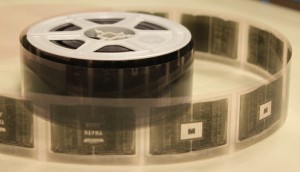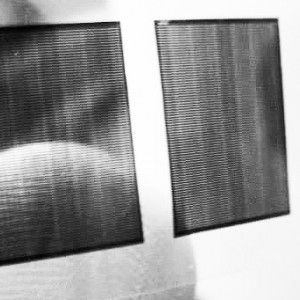What is Buddhist Microfilm Anyway?
So, maybe your buddhist friend brought their new prayer wheel over and mentioned something about “millions of mantras” on something called “microfilm”. Or maybe you have a prayer wheel you bought at a buddhist event that’s supposedly filled with these “mantras on microfilm”. If you don’t really know exactly what it is inside this lovely prayer wheel of yours that somehow contains millions of tiny mantras, you’re not alone in this. At the Prayer Wheel Shop, we get questions from people all over the world about Buddhist microfilm, what it is, and how it works. In this article i’m going to attempt to briefly explain what it is, why it’s in use today and how it relates to prayer wheels, statues and stupas.
Microfilm and Buddhism

Microfilm is exactly what it sounds like, rolls of film (just like the kind you’d see in an old movie projector) with tiny images printed onto it in each “frame”. It was originally used before digital technologies, as a storage solution for the mountains of documents and information humanity produces. Documents were shrunken down so that a document could be stored on each frame of the film (as you can see in the photo above) and then later read with a microscope. Microfilm has been largely replaced for these applications with the coming of digital technology and is now in declining use. It has, however, proven to be the ideal technology for several niche Buddhist applications. I’ll explain why:
According to Tibetan Buddhist teachings, mantras hold a special significance and power. There are various specific mantras and prayers that go into sacred objects like prayer wheels, statues and stupas in order to consecrate them. These mantras can be associated with various tantric deities and practices, or specific to consecrating these different types of holy objects. It is said in Buddhist scriptures that the power of a prayer wheel, statue or stupa increases with the addition of greater numbers of these special mantras and prayers. So essentially, according to these traditions, the more of these mantras you put inside a holy object, the more powerful the result. It is also said to be crucial for these mantras in the written form to be clean, correctly written, clearly legible and oriented in the proper direction when put into a sacred object. This is a major reason digital technologies are generally not used for these applications.
Buddhists have been using paper for this purpose, from ancient India until recent times, but likely they’ve always been looking for ways to get more mantras into that special prayer wheel or statue. It turns out microfilm is the perfect technology for this purpose. The information stored on it (in this case tiny printed mantras and prayers) can be perfectly read with a microscope, yet the size is so small that hundreds of millions of mantras can be printed on a single roll of the film. In addition, the film lasts a very long time and the direction the print is facing can be easily determined for ease of use in projects such as filling prayer wheels. It’s because of all this that Buddhist organizations and individuals worldwide have begun using microfilm instead of printed paper sheets to consecrate and fill their prayer wheels, statues and stupas.

Using Buddhist Microfilm
- What can it be used for? Currently many of the most common mantras and prayers used in the various Tibetan Buddhist traditions to fill Statues, Stupas and Prayer Wheels have been made available on microfilm. Most projects to construct these holy objects could use some microfilm for filling and consecrating them, in place of paper, greatly increasing the amount of mantras and prayers contained within them.
- Why are there hundreds of millions of mantras in some prayer wheels and only a few million in others? This has to do with the fact that different mantras are different lengths and also the imaging process used to produce the masters varies greatly. Depending on the fonts, budgets involved and success in converting the text into a tiny image on microfilm, the sizes of the mantras on the microfilm can vary greatly. For example the “Mani” mantra contains around 790,000 mantras per gram of microfilm. This is because an elaborate and expensive imaging process was used to produce the master. Other mantras may only have 20,000 or 50,000 mantras per gram of microfilm, both because they are longer to begin with and a simpler and less expensive process may have been used to produce the master, resulting in a larger font on the microfilm.

Many people contact us and want a prayer wheel filled up with a special prayer that they have a connection to. It isn’t quite as simple as just printing it out. Here is the process for producing new mantras or prayers on microfilm in brief:
- The Master: In order to print rolls of a specific mantra or prayer onto a roll of microfilm, a master that is to be copied onto the film must first be made. Since these texts are usually in an obscure language like Sanskrit or Tibetan, a scholar and translator must first be hired to format the mantra into a high quality image file and check it for correctness. Then the microfilm experts have to get this clearly and legibly printed onto a microfilm frame. The result is a master roll that can be copied to print the specific film requested over and over at a much cheaper cost. This process of making the first master can be expensive and time consuming. Once the master is produced, however, it can be used again and again to print the new mantra onto microfilm rolls.
- Ordering Microfilm- In order to benefit sentient beings, the Prayer Wheel Shop, The FPMT, Linco Micro-Image Systems and a few other organizations and individuals that have created all the available microfilm masters, have collectively agreed to make these publicly available for anyone to order copies of them on microfilm rolls. There are a large and growing number of Buddhist mantras, prayers and texts available on printed microfilm. For more information on what’s available or to order microfilm contact Jeff Lindquist at www.buddhistmicrofilm.com.
